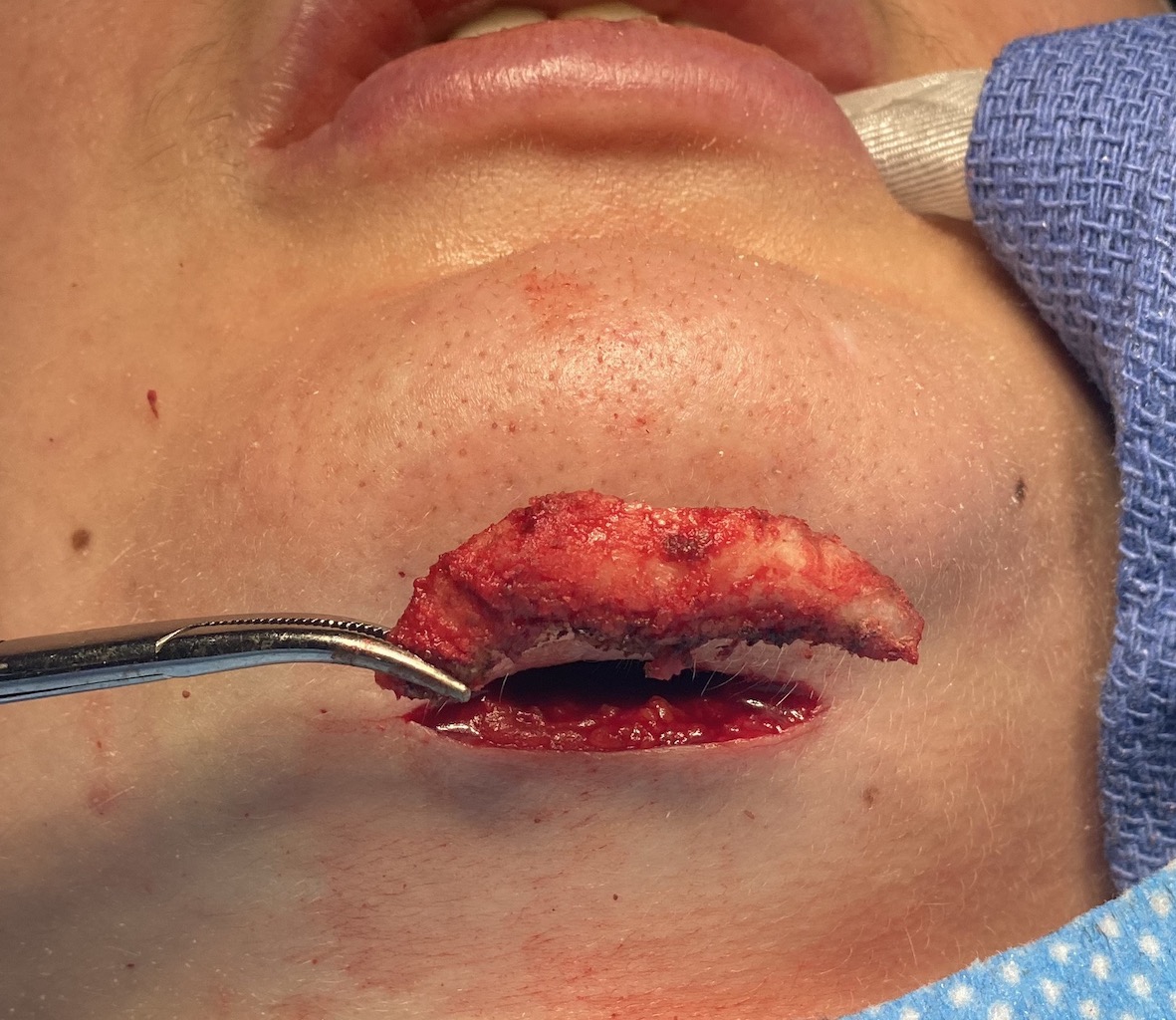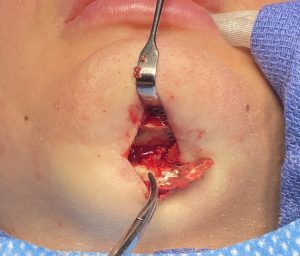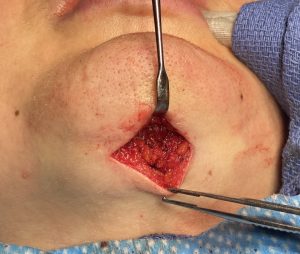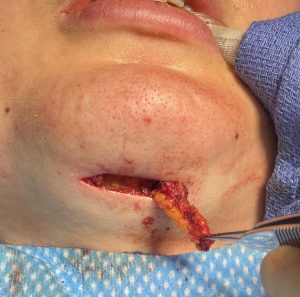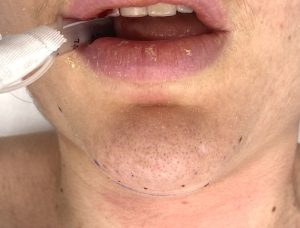Background: As a projecting solitary structure, the chin has a three dimensional component to it. By far the most common type of chin dimensional change requested by patients is augmentative in nature, usually in the horizontal direction. Reductive chin changes is far less commonly requested and, as a result, surgeon experience in doing so is very limited. Chin reductions are also more anatomically involved than augmentations as increasing the shape of the bone, by implant or osteotomy, naturally expands the overlying soft tissues. Conversely reductions involve loss of soft tissue support from the bone removal in which contracture and reshaping around the bone in an aesthetically pleasing manner is not assured.
One specific type of chin reduction is in the vertical dimension. To make the chin less long there are two basic approaches, intraoral and submental. each with their own advantages and disadvantages, The intraoral technique uses an initial horizontal osteotomy with a measured amount of bone removal by a second osteotomy and then the shorter downfractured chin segment is pulled back and put back to the rest of the chin with plates and screws. Its advantages are the lack of any external scar and, more importantly, the surrounding soft tissues remain attached to the bone and follows it upward as it is shortened. Its disadvantages is that it is a more invasive surgery, has a longer recovery, may create some nerve dysfunction (hopefully temporary) and the need for fixation hardware.
The submental approach to vertical chin reduction is done from an incision under the chin as the name implies. From that direction the soft tissues that envelop the chin are degloved and the desired amount of bone removed by shaving from the bottom of the chin bone. Its advantages are it avoids an intraoral recovery, has no risk of mental nerve injury/numbness, and avoids the use of metal hardware. Its disadvantages are the soft tissues must be reduced and rewrapped around the bone for a good result to be seen.
Case Study: This female had a prior history of a sliding genioplasty in which she felt her chin was now a bit too long. Rather than doing a secondary intraoral bony genioplasty to shorten it she opted for a submental vertical chin reduction technique. She estimated that 5mms of vertical bone height was needed.

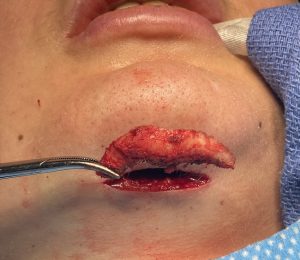
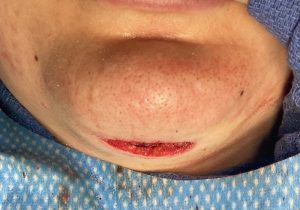
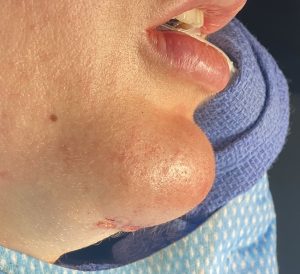
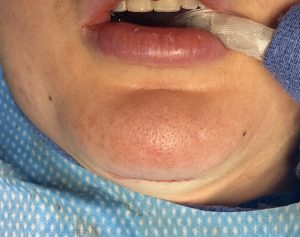
It is a common misconception that a degloved soft tissue chin pad has a good ability to shrink down around a reduced chin bone size. It does indeed do some shrinkage but this occurs in a ball-like fashion due to a 3D contracture pattern. So thought has to be given to what may happen to the overlying soft tissues in any type of chin reduction. In the submental chin reduction, regardless of the type of dimensional change, the opportunity is there to modify/reduce the soft tissues around the new chin shape and a better aesthetic result will occur from it.
Case Highlights:
1) Vertical chin reduction can be done by either an intraoral wedge osteotomy or a submental inferior border osteotomy.
2) In the submental vertical chin reduction technique simultaneous soft tissue management of the attached soft tissues must be simultaneously done.
3) Adjusting the lower level of the submental tissues put to the new level of the chin bone is important to get a good aesthetic result.
Dr. Barry Eppley
Indianapolis, Indiana

